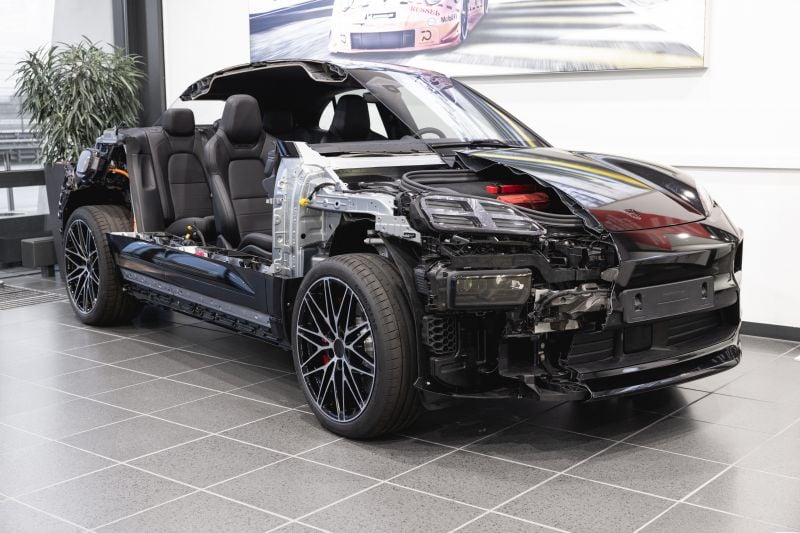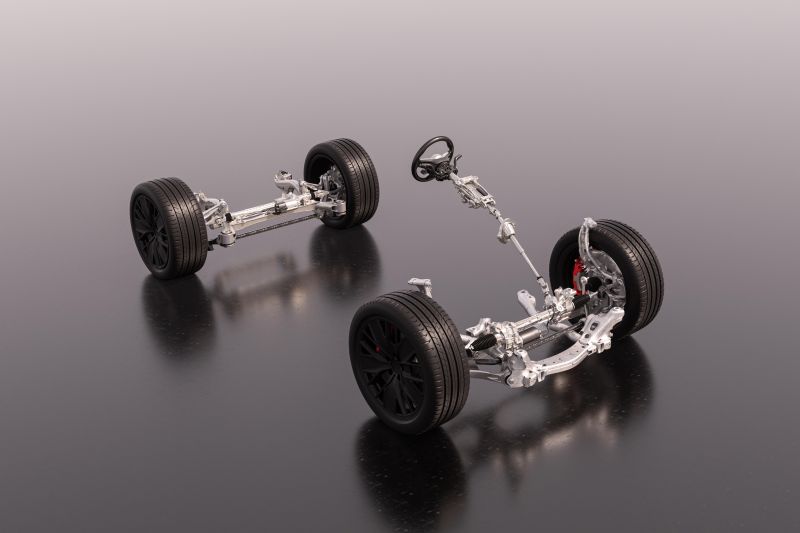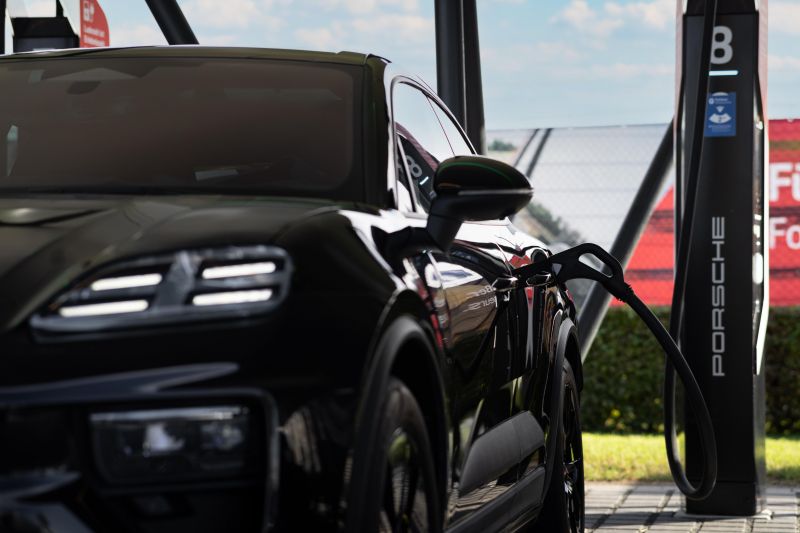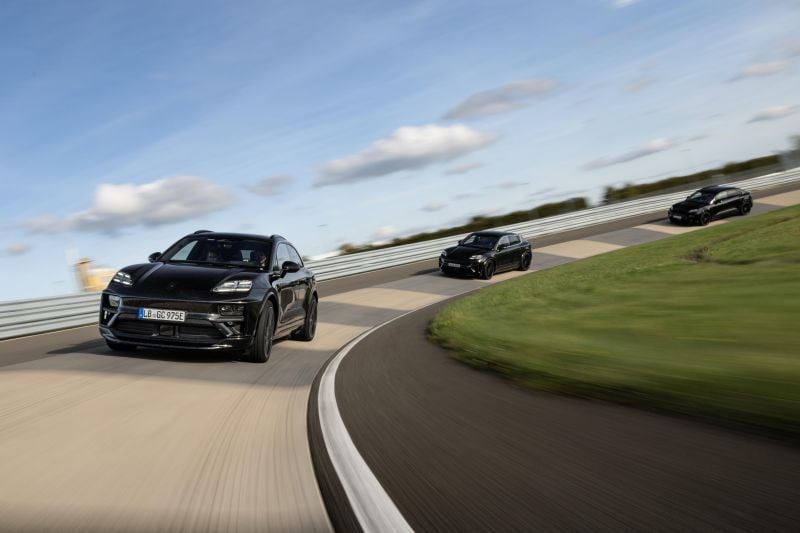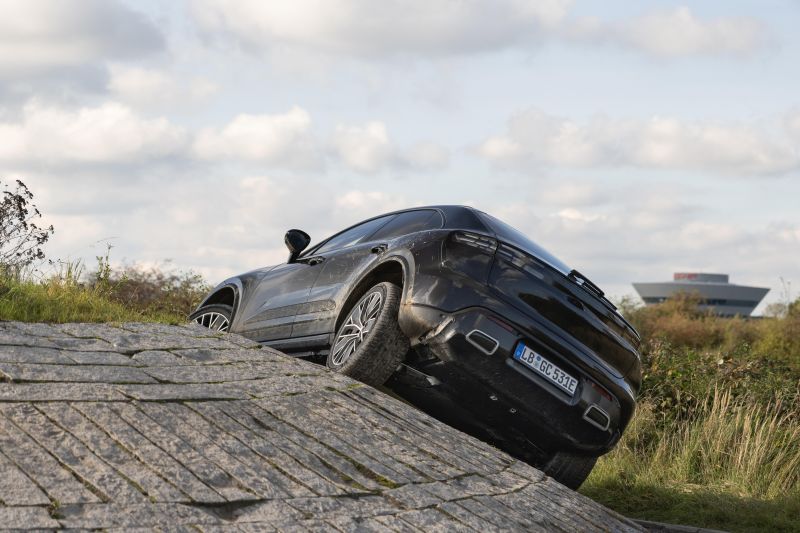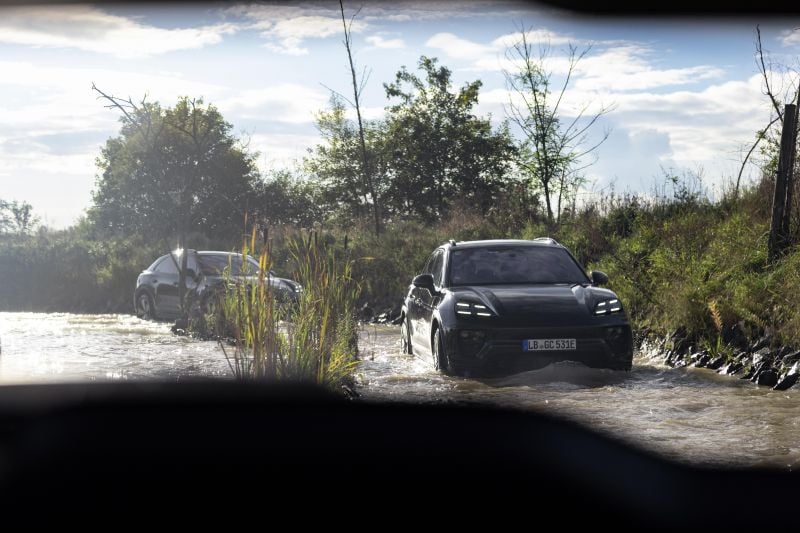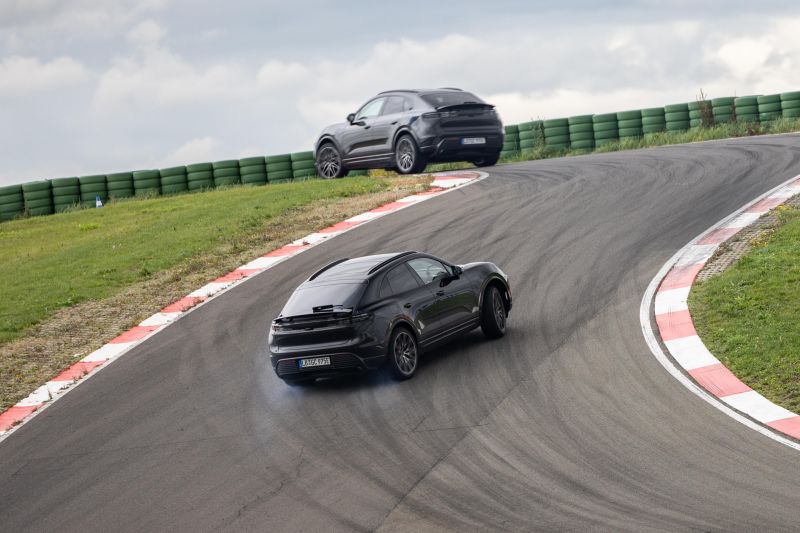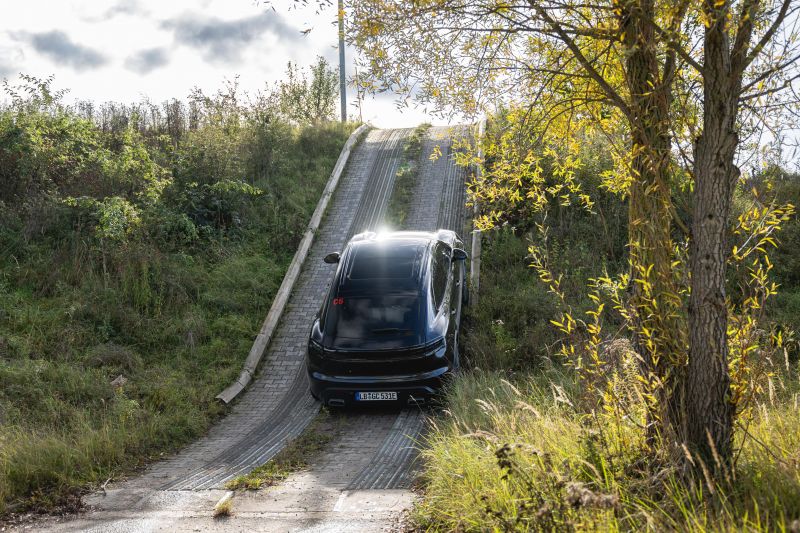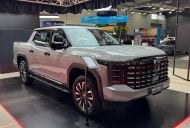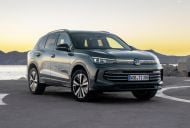Porsche isn’t about to mess with success.
Even as he revealed details of the all-new, electric-powered Porsche Macan at the factory in Leipzig where it will be built, product line boss Jörg Kerner was quick to emphasise the fact the internal combustion Macan will be staying in production for the foreseeable future – although the end its life in Australia is coming to an end in 2024.
Originally launched in 2013, with the facelifted second-generation model hitting the market in 2018 and the third-generation model debuting in 2021, the Macan has been the best-selling Porsche every year from 2015 to 2022, with more than 86,000 sold last year.
Porsche has sold more than 800,000 overall, and the momentum shows no sign of slowing. Sales to the end of September were 15 per cent up compared with the same period last year.
What’s more, 80 per cent of Macan buyers are new to the Porsche brand.
Expecting an electric-powered Macan to quickly fill those shoes is a big leap of faith. And clearly, Porsche has no intention of making that leap without a safety net.
That said, the new Macan is a supremely confident piece of work. Though only the second all-electric car ever from Porsche, following in the wheel tracks of the Taycan, it bristles with cutting-edge electric technology and clever engineering.
Most importantly, after spending time in the passenger seat of a couple of prototypes on the track and off road we can confirm it performs like a Porsche.
The new Macan is built on Volkswagen Group’s PPE platform, an electric vehicle architecture co-developed by Porsche and Audi. PPE is designed to underpin EVs from the Group’s premium brands, enabling higher levels of performance and refinement than the MEB architecture used for Volkswagen and Skoda EVs.
Audi’s Q6 e-tron will be the first car to be launched on PPE and will be quickly followed by the Macan. PPE features an 800V electrical architecture and a modular prismatic battery pack with a gross capacity of 100kWh.
PPE is also highly flexible, able to be built in wheelbases from 2890mm to 3080mm, with tracks ranging from 1641mm to 1714mm, and with ground clearance ranging from 152mm to 217mm.
The electric-powered Macan looks similar to the current car, and though Porsche has yet to release exact dimensions, is about the same size.
Despite the visual similarities, however – and the fact it will be built on the same production line – the electric Macan’s body is all new, and shares not a single exterior panel with the internal combustion model.
Inside is a new interior bristling with Porsche’s latest infotainment technology. Behind the steering wheel is a 12.6-inch free-standing curved screen with a customisable instrument panel display.
In the centre of the dash is a 10.9-inch HD touchscreen on which the driver can position their favourite apps for quick access, just as with a smartphone. A 10.9-inch screen for the front seat passenger is available as an option and can be used to browse through media apps or stream video content, even while the car is being driven.
A special film on this screen prevents the content being seen by the driver. A new augmented reality head-up display is available as an option.
Underpinning it all is new software built on the Android Automotive OS operating system, which allows the use of third-party apps. The operating system also enables, among other things, more powerful voice activation functionality and monthly map data updates, and enables Porsche to offer market specific software, notably for Chinese-market cars.
“We didn’t want to put the customer in just one eco-system,” says Jörg Kerner, “so we built an open eco-system. In coming years it’s not just about the powertrain, but the digitalisation of the automobile, the software defined vehicle. We’re responding explicitly to the demand of our customers.”
All electric Macans will be all-wheel drive. Entry level models will be powered by a pair of new permanently excited synchronous (PSM) e-motors that will be shared with the Audi Q6 e-tron. The motors have the same 210mm diameter stators, but the stator lengths are different, the front motor’s being 100mm and the rear’s 200mm, which means the rear motor is more powerful.
The most powerful Macan, to be badged Turbo, has a different Porsche-developed e-motor mounted directly to the rear subframe with a 230mm diameter, 210mm long stator. Porsche has yet to confirm power and torque numbers for the various electric Macan models, but the Turbo will boast at least 450kW and more than 1000Nm.
“Power is easy,” says drivetrain manager Antoon Janssen. “To make it durable – that’s the challenge.”
For that reason, all the e-motors are water-cooled and drive through a one-speed transmission allowing them to be decoupled from the wheels to enable energy-saving coasting, or lift-off deceleration roughly equivalent to that of an internal combustion engine car with an automatic transmission.
The front e-motor is passive – under normal driving 100 per cent of torque is sent through the rear wheels – but the powertrain control system can instantly and infinitely vary the rear to front torque split depending on traction. The front e-motor is also used to recuperate up to 240kW of energy under braking.
Regardless of spec, the rear e-motor has a silicon carbide inverter to boost performance.
The 100kWh battery pack is mounted under the floor and protected from underside damage – should you be one of the few ever likely to take the electric Macan off-road – by a fibreglass composite skid plate.
The battery consist of 12 modules, each with 15 prismatic cells connected in series, and has a cooling plate in its housing. The modular construction means the battery can be repaired – individual modules can be replaced if necessary – and even updated as newer, higher performance battery chemistries are developed.
Porsche says the battery’s chemistry requires 60 per cent less cobalt and delivers 30 per cent higher energy density than the battery used in the Taycan. It can accept a 270kW charge rate, meaning it can be taken from a 10 percent state of charge to 80 percent in less than 22min on a 350kW charger.
Moreover, it will take just four minutes to add 100km of range on a fast charger, Porsche says.
The company hasn’t released any details on overall range, but the new battery technology suggests the electric Macan Turbo should be able to go further between charges than the Taycan Turbo’s claimed 482km.
The electric Macan rolls on multi-link suspension front and rear. Entry level models get steel springs, with air springs standard on the Turbo.
Air springs allow for the ride height to vary according to which of the Macan’s four drive modes – Normal, Sport, Sport+, and Offroad – is selected. The standard ride height is 180mm. Selecting Sport+ drops it 30mm, while twisting the steering wheel mounted controller to Off-Road raises it 40mm.
Porsche Active Suspension Management (PASM) is standard with air springs but can be added as an option on steel spring cars. A new element of the PASM package is two-valve dampers that allow compression and rebound damping rates to be individually controlled.
These, say Porsche, allow for a greater spread in damping rates across the Macan’s drive modes. Wheels will range from 20 inches to 22 inches with, as is typical Porsche practice, wider tires fitted to the rear.
The revised rear subframe means rear wheel steering will be available on the new Macan.
Standard on the Turbo – along with a mechanical limited slip rear differential – the rear steer system turns the rear wheels up to five degrees in the opposite direction to the fronts at speeds up to 80km/h to improve agility before switching to same-phase steering for better high-speed stability.
Macans with rear wheel steering are also equipped with a front steering rack that is 15 per cent quicker than the standard item.
Porsche wasn’t offering drives of the electric Macan prototypes at the Leipzig event, but we were able to ride along with test drivers on the tarmac Porsche Experience circuit adjacent to the plant, as well as on a mild off-road loop nearby.
Even from the passenger seat the Macan Turbo prototype, riding on 22-inch Goodyear Eagle F1 Super Sport tyres, feels instantly fast on the tarmac, the speed building very quickly, with little apparent effort. Impressive acceleration is easy in an electric vehicle, though.
Where the electric Macan impresses is how playful the chassis feels through the twisties. The little Porsche changes direction crisply, grips hard through the middle part of the corner, and offers power oversteer on demand at corner exit.
The Turbo’s air suspension, two-valve dampers, limited-slip rear differential and rear wheel steering all conspire to artfully disguise the its mass. Though mounted low in the chassis that battery weighs 570kg, and you can feel the car leaning on the outside front tire on initial turn in.
The transition from understeer to neutral balance or oversteer happens readily, however, as the powertrain and chassis computers analyse the yaw rate, accelerator pedal angle, steering wheel angle.
If you want to drift the Macan Turbo will, in Sport+ mode with the electronic nannies switched off, let you smoke the rear tyres to your heart’s content. If you want to be clean and quick, it will let you do that, too. In terms of its dynamic capability, it feels like it has more bandwidth than its internal combustion engine cousin.
Our off-road ride was in a Macan 4S prototype with the height adjustable air suspension and 21-inch wheels shod with Michelin Pilot Sport EV tyres.
There were no big articulation events or deep ruts – if you want to do that sort of off-roading you’ll buy a Toyota – but the Porsche handles mild off-roading with ease, thanks to the ability to precisely control the abundant instant-on torque to ensure optimal traction.
It silently cruised up a 40-degree climb with no apparent effort and having the battery low in the chassis helped it confidently negotiate a 36-degree transverse slope.
History will judge the Taycan as one of the most significant cars in Porsche’s history because it proved the company could build a fast and luxurious electric vehicle with unmistakeable Porsche character. But the electric Macan is arguably a far more important car, not the least because it introduces a Porsche electric vehicle to more mainstream audience.
“It’s emblematic of the transformation of Porsche,” says Jörg Kerner.
The decision to keep the internal combustion engine Macan in production shows Porsche, like many manufacturers, is hedging its bets on electrification. But the company says it remains committed to having 80 per cent of its lineup powered by electricity by 2030.
The electric Macan will next year be followed by a new electric-powered 718, and then by a new electric-powered Cayenne.
And on top of those is an all-new electric-powered SUV, known internally as K1, that will be larger and more luxurious than the Cayenne and primarily aimed at the US and Chinese customers.
“Porsche remains Porsche not because we remain stagnant,” insists Jörg Kerner, “but because we are open to new ideas.”





